About us
ShowTex is a worldwide leader in inventing, manufacturing and installing innovative flame retardant fabrics, tracks and motion control systems for achieving the creative vision of theatre, event and entertainment professionals.
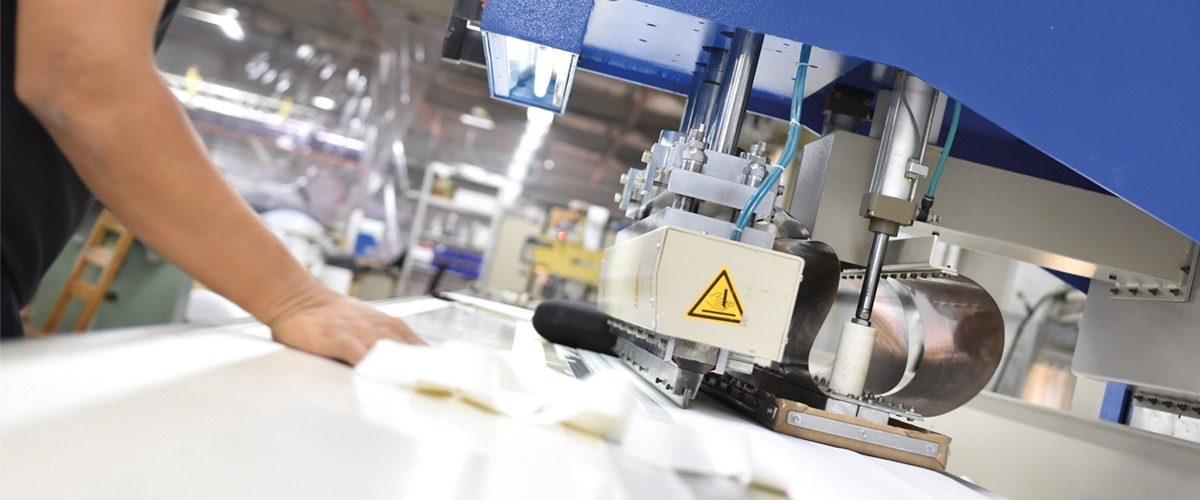
This article is part of our series: projection screen buyer guides.
Looking for the complete guide to projection screens and surfaces? Download our free eBook!
ShowTex offers a wide range of projection screens, each with its own specifications to obtain the best result for various applications. In order to choose the right screen for your set up, it is important to answer the following questions first.
Do you want to discuss your project or get projection screen pricing?
Front projection means the projector and the audience are on the same side of the screen, where as with rear projection, the projector is placed behind the screen and the audience is looking towards the projector with the screen functioning as a diffuser. Both systems have advantages and disadvantages:
Front Projection
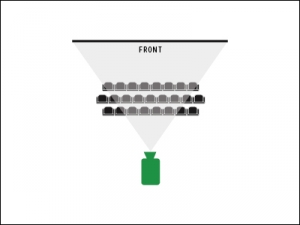
Rear Projection
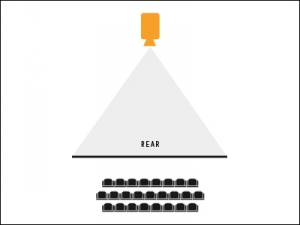
Dual or Twin Projection
Some screens are used for both front and rear projection, they are called dual screens.
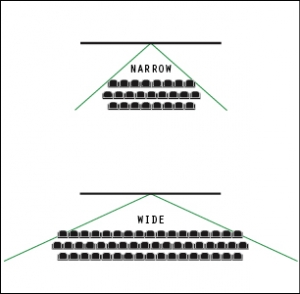 The amount of light reflected by the screen is known as ‘gain’. This represents the light reflected from the screen compared to that reflected from a defined standard white reference material. Therefore, a screen with a 1.0 gain will reflect the same amount of light as the reference material. A screen rated 1.5 gain will reflect 50% more light as the reference material.
The amount of light reflected by the screen is known as ‘gain’. This represents the light reflected from the screen compared to that reflected from a defined standard white reference material. Therefore, a screen with a 1.0 gain will reflect the same amount of light as the reference material. A screen rated 1.5 gain will reflect 50% more light as the reference material.
Gain is measured from the point of view where the screen is at its brightest, which is directly in front and at a 0° axis to the screen. Depending on the choice of screen surface, the more you move to the side and view the screen from an angle, the less bright the projected image becomes:
A screen with a flat gain ratio diffuses light more evenly in all directions, great for seating to be placed in a wide viewing angle relative to the screen. Spectators will experience a similar image quality regardless of the angle of view.
A screen with a peak gain ratio is more suitable for set ups with a more narrow viewing angle, as the image quality increases to those seated in the center, but drops for those seated at the outside.
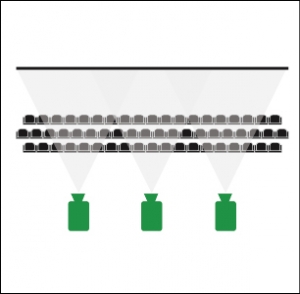 Single projectors are used in more classical setups such as, cinema’s (temporary or permanent), relay screens (e.g. on both sides of a stage) or smaller conferences (e.g. meeting rooms)
Single projectors are used in more classical setups such as, cinema’s (temporary or permanent), relay screens (e.g. on both sides of a stage) or smaller conferences (e.g. meeting rooms)
The brightness of the projection can be increased by using a “double stack”, this is when two projectors are placed on top of each other to create one brighter image.
Soft edge blending is a method whereby two or more projectors are used together. The edges of each of the projected images are overlapping, creating a wider display more suitable for showing wide screen content. Obviously, this works best with screens that have a flat gain ratio and therefor reducing the “hot spot” effect and enlarge the viewing area.
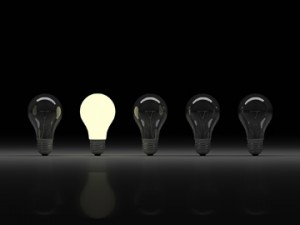 The quality of the projected image is subject to the level of ambient lighting. Generally speaking, rear projection screens are more resistant to ambient lighting than front projection screens because the latter reflect all light sources, both from the projector as ambient light.
The quality of the projected image is subject to the level of ambient lighting. Generally speaking, rear projection screens are more resistant to ambient lighting than front projection screens because the latter reflect all light sources, both from the projector as ambient light.
A darker rear screen reflects less light, decreasing the brightness of the projected image but also of the ambient light. In theory, these screens don’t have the most spectacular test results, but in practice they seem to give a much better result.
High gain screens are more vulnerable to ambient light, as the amount of reflected light increases by the amount of gain.
Contrast is the difference between the whitest white and the darkest black displayed; the greater the contrast, the better the screen. However, ambient lighting has a big effect on screen contrast.
As front screens reflect all light sources, their perceived contrast is highly dependent on the presence of ambient light. Overall, front projection screens with higher gains will do the best job of preserving image contrast.
Since a projector cannot project black in its content, it is actually the absence of light that you are seeing. Darker screen surfaces reflect less of the ambient light sources and they appear to have “darker” black levels because of the colour of the projection surface. This actually increases the contrast perception of the projected image.